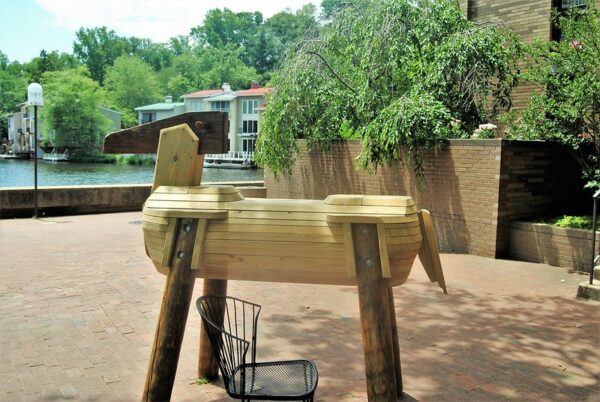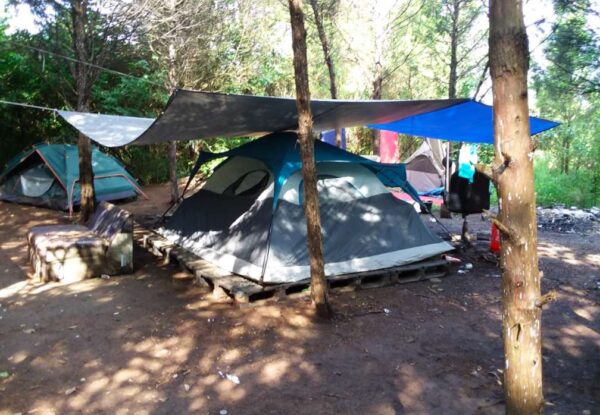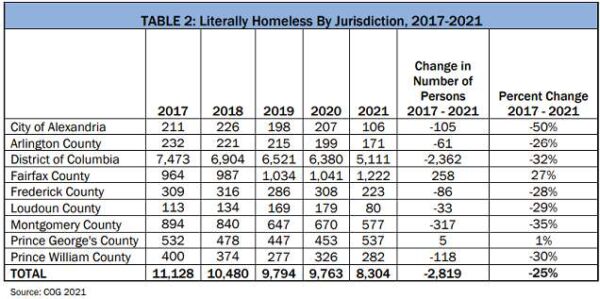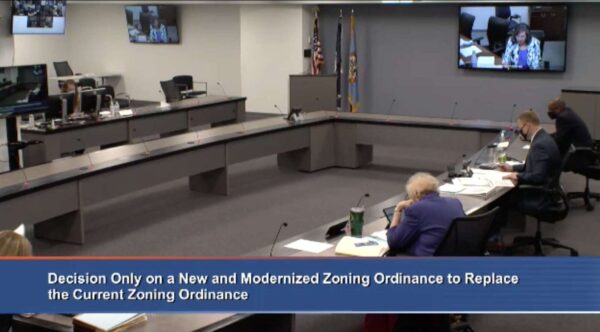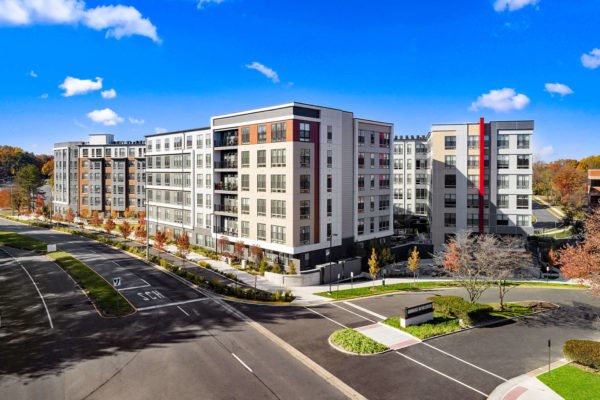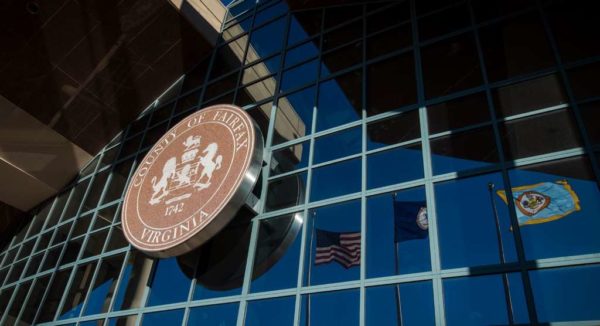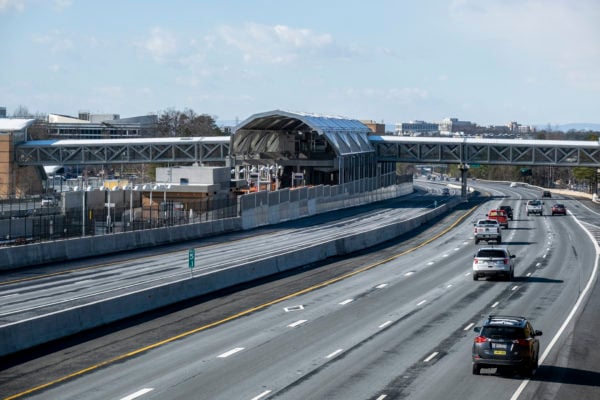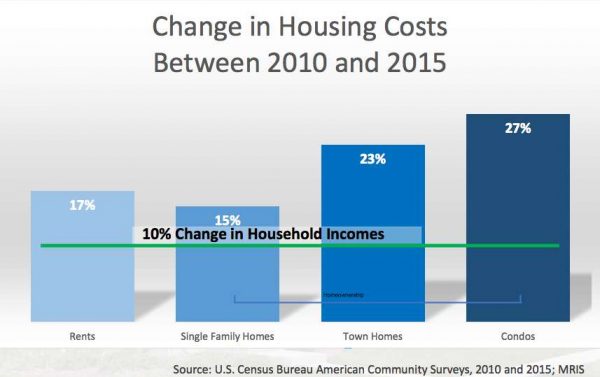
Virginia State of Emergency Ends Tonight — The public health emergency that Virginia has had in place since March 2020 due to COVID-19 is set to expire at 11:59 p.m. today (Wednesday). Gov. Ralph Northam’s office has said the order will not be renewed, but ambiguities about mask-wearing could be addressed in a General Assembly special session scheduled for Aug. 2. [WTOP]
Northam Signs Voting Access Legislation — Virginia’s governor formally signed several bills on Monday (June 28) intended to make it easier for people to vote. Changes include allowing localities to open polling places on Sundays during early voting, requiring localities to provide drop-off locations for absentee ballots, and enabling first-time voters to register for an absentee ballot by mail. [WTOP]
Public Input Sought on Regional Housing Plan — Fairfax County is participating in the Metropolitan Washington Council of Governments’ effort to develop a Regional Housing Equity Plan to identify and address racial disparities in housing. COG will host three workshops in July to discuss the history of race and housing and get community perspectives on the issue. [Fairfax County Housing and Community Development]
Sorrento Leasing Tours Delayed — The 306-unit apartment building at 1925 Roland Clarke Place in Reston will not open for leasing tours on July 1 as previously expected. Sorrento Senior Business Manager Curtis Schaeffer tells Reston Now that the date has been pushed back, likely to mid-to-late July, as some work still needs to be done, including the installation of furniture, before the leasing team moves into the building. [Sorrento]
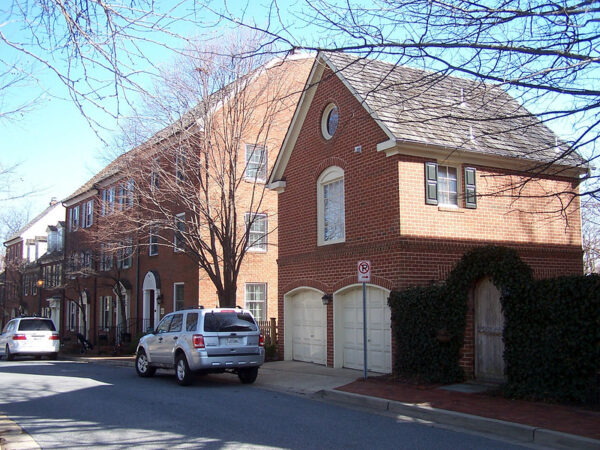
Homeowners seeking to rent out their basements or other parts of their residence as well as renters and neighborhoods concerned about parking will soon have new rules aimed at helping them.
A revised zoning code for Fairfax County, the first overhaul in around 40 years, becomes effective Thursday (July 1).
In addition to updating the county’s regulated uses with new options like live-work developments and solar farms, the new ordinance loosens some restrictions around accessory dwelling units — independent residential units that share a property with a main dwelling. But zoning officials say they expect a modest increase in homeowners converting parts of their property for other people.
Adopted in March, the new rules replace existing standards for ADUs — now dubbed accessory living units or ALUs — from 1978 and 1983, drop requirements that the occupant of the revamped space have a disability or be 55 years or older, and add parking requirements.
While the changes inspired some strong opinions from community groups, their impact is expected to be relatively small: Fairfax County approved 12 accessory unit applications in 2019, seven in 2020, and two so far this year as of Friday.
County staff previously noted there have been community concerns over whether the code is being enforced. A burdensome special permit approval process also may have been creating problems, the county said.
“Others may be installing ALUs anyway, but then perhaps they’re more likely to be unpermitted construction without the benefit of the permits and inspections,” Carmen Bishop, assistant zoning administrator, said in January before the Fairfax County Planning Commission. “So a less burdensome process may result in better compliance.”
People who have wanted such changes have had to go through a hearing, a process where neighbors could weigh in. Under the new rules, a property owner can add an interior ALU with just an administrative permit instead if they meet certain requirements.
That includes a new measure that adds an extra parking spot in off-street parking. Whether or not there’s an accessory living unit, a detached single-family house on a public street must have two off-street parking spaces or — if it’s on a private street — three off-street spots, according to the county.
“When a house has an ALU, one additional parking space will be required, which means, homes on public streets will need three off-street spaces and homes on private streets will need four off-street spaces to meet the zoning ordinance standard,” Leslie Johnson, the zoning administrator for the county’s Department of Planning and Development, said in an email Friday.
The new standards come as the county’s population exceeds 1.1 million people after rising by over 100,000 people every decade from 1980 to 2010, according to census data.
With housing prices expected to continue rising, proponents of the ALU rule changes argue that they will provide more flexibility for residents who want to stay in the county but can’t afford to live on their own.
Earlier in June, the Fairfax County Redevelopment and Housing Authority approved a change that made it easier for certain people in a first-time homebuyers program to rent a portion of their owner-occupied homes after a resident made a request.
The switch applies to 38 units and makes the authority’s policy consistent with all other units in county homebuyer programs, county spokesman Benjamin Boxer said in an email.
“Those owners may rent a portion of their home as long as they continue to occupy the property as their primary residence,” Boxer said in an email. “It is worth noting that, historically, we have rarely received any requests from our participating homeowners to rent portions of their homes.”
via BeyondDC/Flickr

Reston Man Among Suspects in Maryland Murder — Reston resident William Rivera-Martinez, 20, is among five people who have been arrested and face charges in the April murder of a 15-year-old Nelson Ramos. As of Thursday morning (June 24), Rivera-Martinez was in Fairfax County custody and awaiting extradition to Prince George’s County. [The Washington Post]
Threat of Mass Evictions Looms with Moratorium Set to End — Fairfax County officials say there’s “plenty of emergency rental assistance” to help residents at risk of eviction, but with Virginia expected to let its eviction moratorium expire when the COVID-19 state of emergency ends on June 30, they worry it will take too long to get the money to landlords to stave off evictions. [Inside NoVA]
Herndon Startup Chosen for Amazon Program — The data analytics company HawkEye 360 has been chosen by Amazon Web Services for a four-week business accelerator focused on the space industry. The 10 companies selected for the program will get business advice and support in their efforts to collect data from satellites for cloud computing. [Axios]
Reston Trucking Software Company Acquired — “Trucker Tools LLC, a Reston outfit that offers a digital freight management platform, has been acquired by ASG, a California company backed by private equity firm Alpine Investors that specializes in purchasing and building software-as-a-service companies.” [Washington Business Journal]
Photo via vantagehill/Flickr
New images show what future residents and visitors can expect from a $1.4 billion project near a forthcoming Reston Town Center Metro station.
As first reported by the Washington Business Journal, developer Brookfield Properties has released more details on the upscale housing coming to the Halley Rise residential, office, and retail complex under construction along Reston Parkway.
Preleasing for apartments in The Edmund — a seven-story apartment building with 353 luxury units — is slated to begin this summer before residents are welcomed in the fall, the developer tells Reston Now.
“As we meet this next major milestone, we’re a step closer to creating a visionary neighborhood that blends nature, technology, entertainment, and art, enabling residents, workers and visitors to curate their ideal day every day, in a vibrant and engaging community,” Greg Meyer, executive vice president and head of the D.C. region for Brookfield Properties, said in a statement.
The Edmund will feature common areas and outdoor seating as well as a pool, fitness center, coworking space, yoga lawn, and more. An interactive virtual tour offers a glimpse of one of the 1,600 units expected at the 36-acre mixed-used campus.
The luxury apartments will include mostly one-bedroom apartments, with 17% of the units being studios, 17% two bedrooms, and 3% three bedrooms, Brookfield Properties U.S. communications director Laura Montross said in an email.
Rental details are not yet listed with the developer’s website.
When completed, Halley Rise will have 1.9 million square feet of office space (about five and a half times the size of the Lincoln Memorial Reflecting Pool), 240,000 square feet of retail (just over four football fields), over five acres of public open space, and new public streets.
The development will be anchored by a Wegmans grocery store slated to arrive in 2023, slightly later than the late 2022 timeline that Reston Now last reported.
Real estate developer Akridge is looking to add 480 residential units and retail as part of the complex. That addition is currently scheduled to go before the Fairfax County Planning Commission for approval on Dec. 8.
Construction for Halley Rise began in October 2019, and it’s already showing off one of its amenities: self-driving vehicles within the complex. The service has also expanded in the DC region.
Halley Rise is one of several developments in the works in anticipation of the second phase of Metro’s Silver Line. Also near the impending Reston Town Center station, Boston Properties is working on the massive Reston Gateway project, which is undergoing some changes that were set to go before the Board of Supervisors today (Tuesday).
The board’s meeting package indicates that it will defer the public hearing on that application until July 13.
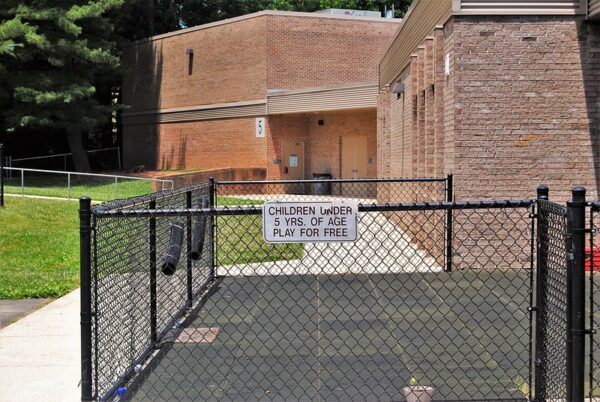
Amazon Partners with Metro on Affordable Housing — Amazon will devote $125 million to fund the construction of 1,000 new affordable housing units on land owned by Metro or near Metro stations. The initiative is intended to help bring more low and middle-income residents closer to public transit and job centers, but it will be up to developers to apply for the funds. [The Washington Post]
County Brings COVID-19 Vaccine Clinic to Reston — The North County Governmental Center (1801 Cameron Glen Dr.) will host a COVID-19 vaccine clinic today from 9 a.m. to 4 p.m. The Johnson & Johnson vaccine will be provided, which has been authorized for adults 18 and older, and walk-in appointments are available. [Hunter Mill District News]
Georgetown Pike Bridge Closes Tomorrow — Georgetown Pike over Difficult Run will be closed to traffic between Old Dominion Drive and Towlston Road in Great Falls from 8 p.m. Friday (June 18) to 4 a.m. on Monday (June 21). The closure will enable crews to make bridge repairs, which will involve some overnight noise from concrete demolition and other construction activities. [VDOT]
Reston Association Yard Sale Returns — The 80 Family community yard sale is coming back on Saturday (June 19) after missing last year due to COVID-19 health restrictions. Scheduled for 8:30 a.m. to noon in the RA parking lot (12001 Sunrise Valley Dr.), the event will include a Kona Ice truck selling shaved ice and a Purple Heart collection truck that will accept donations of unsold items. [Patch]
Reston Software Company Launches Second Year of Scholarship Program — The Ellucian Foundation, the philanthropic arm of the recently acquired company Ellucian, will accept applications for its PATH Scholarship Program until July 14. The program gives higher education institutions block grants of up to $25,000 “to support students facing economic hardship and educational disruptions.” [Ellucian]
Photo via vantagehill/Flickr
Primary Voter Turnout Expected to Follow Pre-Pandemic Trends — “While tens of thousands of Virginians already voted early ahead of the primary election on Tuesday, the turnout for people casting ballots in person is expected to look more like it did before the coronavirus pandemic. ‘I suspect that the bulk of the voters will be voting tomorrow as they traditionally have,’ said Fairfax County General Registrar Scott Konopasek. [WTOP]
Public Housing Application Period Opens — “The Fairfax County Redevelopment and Housing Authority (FCRHA) is now accepting new tenant applications for selection to the Rental Assistance Demonstration (RAD) program waitlist. The RAD program, formerly known simply as “public housing,” provides 1,060 units of publicly owned housing to low-income households…Applications must be completed online between 8 a.m. on June 7 and 11:59 p.m. on June 13.” [Fairfax County Government]
Virginia Sees Overall Drop in Violent Crime — “Virginia saw a slight decrease in violent crime in 2020 compared to 2019, according to the state police’s annual crime report. The number of homicides in the state, however, increased by 23.4 percent. Across the state, there were 15,713 violent crimes reported in 2020 compared to 16,018 violent crimes in 2019, a 1.9 percent drop.” [Patch]
Reston Museum to Revisit Encounter with Former First Lady — “Join the Reston Historic Trust & Museum for a special all-virtual program on July 13, 2021 from 6-8 p.m. commemorating Lady Bird Johnson’s 1967 visit to Reston. Special guest Julia Sweig, author of Lady Bird Johnson: Hiding in Plain Sight, will provide insight into Lady Bird Johnson and her involvement in urban planning projects, democratic access to nature and more.” [Reston Historic Trust and Museum]
Fairfax County Fire Department Awarded — Fairfax County Fire Chief John Butler is a co-recipient of the Excellence in Virginia Fire Services Award from the 2020 Governor’s Fire Service Awards for helping launch a Field Available Component Transfusion Response (FACT R) program, which uses 9-1-1 resources to deliver blood transfusions to trapped individuals. A county firefighter was also named Career Firefighter of the Year. [FCFRD]
Photo via vantagehill/Flickr
A new report by the Metropolitan Washington Council of Governments (COG) highlights some remarkable regional success in reducing homelessness. In Fairfax County, the numbers seemed to tell a different story, but county leadership says some of that is a result of the way the survey is conducted.
The annual study sends researchers across regional localities to collect a snapshot of how many residents are experiencing homelessness, and while not a comprehensive scientific count, it’s generally seen as a look at regional trends.
While neighbors like Arlington County and the City of Alexandria reported declines in their homeless population counts by 14% and 49%, respectively, Fairfax County is one of only two out of nine jurisdictions surveyed that saw its homeless count increase.
In Fairfax County, homeless population counts went from 1,041 in 2020 to 1,222 in 2021, a 17% increase. The only other D.C.-area locality to report a year-to-year rise in its homeless population was Prince George’s County, which increased by 19%.
Fairfax County claims on its website that the increase reflects an expansion of shelter capacity and services, rather than an increase in homelessness.
“The increase is primarily attributable to the increase in the community’s capacity to provide shelter with increased federal emergency funding associated with the COVID-19 pandemic, and the commendable efforts of service providers to care for unstably housed community members,” the Fairfax County Office to Prevent and End Homelessness said.
Fairfax County Board of Supervisors Chairman Jeff McKay similarly credited the increase in the count to an increase in accommodations for people experiencing homelessness.
“This year’s data indicates an outstanding effort by our Housing staff and our community-based partners to respond to the unprecedented impacts of 2020,” he said in a statement. “By providing safe housing accommodations and a wide variety of supportive services to assist our most vulnerable neighbors along the path toward housing stability, we have been able to help our entire community.”
However, since at least 2017, the homeless population counts for Fairfax County have been gradually increasing, which McKay says is also indicative of an inadequate affordable housing stock.
Released in two parts across 2018 and 2019, the county’s Communitywide Housing Strategic Plan set a goal of producing a minimum of 5,000 net new affordable housing units within 15 years. 1,800 units are currently in the pipeline, according to McKay.
In his statement on the homelessness point-in-time count data, McKay said:
Most importantly, it indicates that our work on the issue of housing — including emergency housing — must and will continue to be a critical priority for this Board. This is an essential component of our community’s crisis response system for those who need help in regaining a safe, decent and stable housing situation.
Housing is a foundational component in achieving positive outcomes in nearly every aspect of our lives and having thousands of our neighbors experiencing homelessness or struggling to remain in their homes is not something that we as a community will turn a blind eye to. This could be any of us. There are too many circumstances beyond our control which can cause that stability to be shaken through no fault of our own.
Photo via MWCOG
One Life Fitness Workers Put Out Sauna Fire — Fairfax County Fire and Rescue units responded to a “small fire” in the One Life Fitness Reston sauna room yesterday, but maintenance workers put out the blaze before firefighters arrived. An employee told Reston Now that the fire just caused some damage to the wood. It was the first day the sauna had been turned on in more than a year. [Patch]
CVS Allows Walk-in Vaccine Appointments — CVS Health is now offering COVID-19 vaccinations to walk-in appointments and same-day scheduling at all stores in Virginia, joining Giant, which started allowing walk-ins at its pharmacies on Monday (May 3). There are five CVS stores in Reston and three in Herndon. [Patch]
D.C. Judge Vacates National Eviction Moratorium — A D.C. judge ruled that the CDC lacks the authority to institute a nationwide moratorium on housing evictions, but even if the ruling ultimately stands, experts say it likely won’t have an immediate impact on D.C. area tenants. Virginia has a patchwork of protections but no statewide ban.” [DCist]
Air and Space Museum Reopens in Chantilly — Yesterday, the Udvar-Hazy Center became the first Smithsonian museum to open since last fall, when the institution largely shut down due to the COVID-19 pandemic. New additions include a display commemorating the late Apollo 11 astronaut Michael Collins and an X-Wing Starfighter from the most recent “Star Wars” movie. [WTOP]
South Lakes Girls’ Basketball Celebrates Recent Success — “#WCW In the past 2 seasons, your Seahawks went a combined 22-1 in Liberty District competition, & won back to back championships for the 1st time since 1985-1986.” [South Lakes Girls Basketball/Twitter]
Photo via vantagehill/Flickr
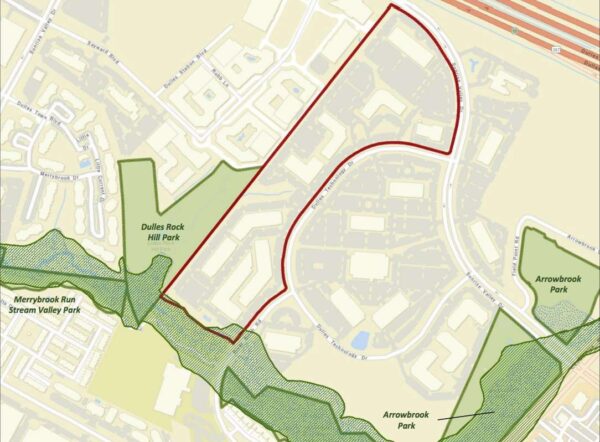
A new neighborhood is coming to Herndon this summer.
Reston-based homebuilder Stanley Martin will open the Liberty Park neighborhood in Herndon in July. It will feature 155 two-over-two condo and townhome options.
The townhomes will start in the $700,000 range, while condos start in the mid-$500,000 range. The housing will include options for two to four bedrooms, two to four baths, and up to 2,700 square feet of space.
Both townhomes and condos will have private garages, balconies, and rooftop terraces.
Neighborhood features include garden parks, playgrounds, electric vehicle charging stations, and dog stations. The site also has active recreation areas that include a playing field and basketball court.
MRP Realty originally acquired the property at 13605 Dulles Technology Drive in 2016 as a part of a reported $97 million purchase from Liberty Property Trust, according to the Washington Business Journal.
The purchased Liberty Park portfolio encompassed the entire 32-acre business park with eight buildings and 532,041 square feet, according to MRP Realty’s website.
MPR Realty says that it plans to bring “Class A amenities” to the buildings at Liberty Park, including a “community tenant lounge and conference facility, a fitness center, and outdoor experiences to set them apart from other properties in the market.”
The new residential neighborhood is part of a larger effort by MPR Realty to transform the Liberty Park office complex into a mixed-use development to take advantage of the area’s proximity to the upcoming Innovation Center Metro station.
The Fairfax County Planning Commission approved the developer’s application to rezone the site for mixed-use development on Nov. 8, 2018. According to a final development plan published in March 2019, MPR Realty ultimately hopes to bring up to 530 residential units and up to 6,000 square feet of retail space to Liberty Park.
Image via Fairfax County
The Fairfax County Board of Supervisors voted yesterday (Tuesday) to approve changes to the county’s zoning ordinance intended to make the codes easier to navigate and understand.
The 7-3 vote — with Supervisors Walter Alcorn, Daniel Storck, and Pat Herrity dissenting — serves as the culmination of a four-year Zoning Ordinance Modernization Project, or zMOD, that began in 2017 to update zoning laws codified in 1978.
Although the updates to the document were sweeping in scope, three proposed changes drew a great deal of public attention and comment. These included proposals to loosen restrictions on accessory living units and home-based businesses and revise size and height regulations for flags and flag poles.
“There are…very few issues receiving much attention,” Dranesville District Supervisor John Foust said. “I believe that demonstrates that, given everything that we’ve done, it was a fair and transparent process.”
Storck, who represents the Mount Vernon District, said he supports many aspects of the 614-page draft, but a few areas surrounding the accessory living units and the home-based businesses, including the permit process and enforcement, give him pause.
He worries that some of the proposed changes to require only administrative permits could lead to a lack of engagement and that enforcement, which he calls “the bread and butter of public confidence,” is not going to be swift or strong enough to stop zoning violations.
Approved changes to the regulations for accessory living units include allowing interior units with an administrative permit and removing the requirement that only those 55 and older or disabled people can live in them. However, the owner must live in the main home, can only operate one ALU in which up to two people can reside, and must provide a parking spot.
To operate a home-based business, people will need to get special exception permits to have customers visit between 8 a.m. and 9 p.m., unless they provide instruction to fewer than eight students a day and up to four at a time.
Acceptable businesses include retail — as long as sales and delivery occur online or offsite — as well as exercise classes, repair services for small household items, hair salons, and clothing tailors. People can also operate an office or as a music, photography, or art studio out of their home.
Residents can have up to three flags, and flag poles can be up to 25 feet tall when in front of a single-family home or up to 60 feet tall on other lots. Property owners can apply for a special permit to extend the height of a pole.
The board opted not to adopt any regulations limiting the size of flags.
In voting for the final draft of the plan, Providence District Supervisor Dalia Palchik said the document represents a compromise that goes “further than some would like to go, but not as far as others would like.”
The supervisors highlighted the Herculean effort that went into overhauling codes for a county as large as Fairfax and taking into account community input. Foust said that the most recent draft, which was subject to a public hearing on March 9, “includes revisions that significantly improve the initial package that we considered.”
Board of Supervisors Vice Chair Penelope Gross said that home-based businesses and accessory living units are both “already here,” so the changes help clarify what is allowed and set guardrails to preserve neighborhoods and allow people to work from home.
“I know there’s a lot of speculation about what will happen. Speculation is usually just that: speculation,” she said. “It sometimes is fear.”
Palchik said she does not discount the people who expressed legitimate concerns, but she argued that many of those have been addressed during the zMOD process. She aargued that many of the changes are similar to, if not “much more modest” than policies that are already in place elsewhere in the D.C. area, including in Montgomery County, D.C., Arlington, Loudoun County, and the City of Alexandria.
“While there are many changes to the zoning ordinance, I do believe it’s critical in seeing that our housing market is under pressure and costs of living continue to rise, especially for those who struggle to live here,” she said. “While accessory living units do not fix all of these problems, the added flexibility for our most vulnerable residents and additional options for those who want to remain in their homes can be part of the solution.”
Photo via Fairfax County
The Fairfax County Board of Supervisors is aiming to formally update its Workforce Dwelling Unit (WDU) policy to provide affordable rents for those in need as rents continue to increase across the region.
However, these policy changes would not apply to Reston, which is currently undergoing its own separate study to update its WDU policy. The proposal heads to the board for a public hearing and a vote today.
The main update is lowering the household income levels served under the county’s rental WDU program from a maximum of 120% of the Area Median Income (AMI) in the Washington D.C. Metro Area to 80% of AMI. It also now includes those at 70% and 60% of AMI in the program. The changes are based on a comprehensive staff report released last month.
The area median income (AMI) is the household income for the median household in a region. Currently, in the D.C. region, the AMI is $126,000 for a household of four.
“We conducted a housing strategic plan process over the last two or three years, which identified, sort of these lower incomes as being in the greatest need,” says Tom Fleetwood, Director of Fairfax County Housing and Development. “While at the same time, the higher income tiers that were served under the original version of the WDU program really were closer to the prevailing market rents here in Fairfax County.”
The updates would also lower the minimum percentage of rental units offered as WDUs from 12% to 8%. According to the plan, 4% of those units would need to be offered to those at 80% AMI, 2% to those at 70% AMI, and 2% to those at 60% AMI.
However, these numbers are different and are specifically revised for the Tysons Urban Center.
Fleetwood says the policy is “similar in intent” but the specific numbers are more in context with the realities of Tysons’ rental market.
In Tysons, developers would have the ability to choose between two different options for their affordable rental units. Either they can offer 2% of the units at 60% AMI, 3% at 70% AMI, and 8% at 80% AMI, which brings their WDU commitment to 13% in total, or they can simply offer 10% of their units at 60% of AMI.
The county’s planning commission voted unanimously to make these changes.
Reston is working on their own separate WDU study as part of the Reston Comprehensive Plan Study. That study is being initiated by a task force led by Hunter Mill District Supervisor Walter Alcorn.
Alcorn’s communication director Lisa Connors, tells Reston Now that Reston has a “separate formula for WDUs.” Similar to the policy updates that the county is voting on, WDUs will be discussed at the study’s task force meeting on March 8.
Affordable housing continues to be a challenge for Reston.
The Board of Supervisors is also voting to update, revise, and rewrite editorial elements of the policy that was first established in 2015. The revisions would update data, rework outdated terminology, and remove references to programs that no longer exist.
Photo by Mike Reyes/Flickr
Lincoln at Reston Station, a 260-unit apartment community near the Wiehe-Reston East Metro Station, officially has a new name.
The community, which was recently acquired by Snell Properties, an Arlington-based company, has rebranded itself to Russell at Reston Station.
Peter Colarulli, Vice President of the company, said the name change was inspired by the design of the building, which he says has “a bold, contemporary, energetic feel with red pops of color.“
“The name ‘Russell’ taps into the community’s vibe, and we felt the full name ‘Russell at Reston Station’ is clear to the sense of place and catchy with its alliteration.”
The residential community, which is located at 11500 Commerce Park Drive, includes a mix of studio, one-bedroom, two-bedroom and three-bedroom plans. Rents range from $2,110 to $2,380.
Snell purchased Russell at Reston Station in December. The building was constructed at the end of 2019 and includes a courtyard with a pool, a clubroom, a fitness center, a pet spa, bike room and a package concierge system.
Image via handout/Fairfax County Government
Fairfax County will receive an additional $34 million to provide emergency rental assistance to residents experiencing economic challenges due to the COVID-19 pandemic.
During a budget policy committee meeting yesterday (Tuesday), Fairfax County Department of Management and Budget Director Christina Jackson told the county board of supervisors that the department has submitted a certification for the award, and the amount is expected to be confirmed today.
The money comes from a $25 billion emergency rental assistance program that the U.S. Treasury Department established using funds from the COVID-19 relief package that Congress passed at the end of December.
“This will be huge,” Fairfax County Board of Supervisors Chairman Jeff McKay said. “I know we feel good about it, but obviously, there are a lot of folks out there struggling, and this will be a great opportunity to help those folks.”
Under the treasury program, renters may be eligible to receive assistance if at least one or more people in their household has experienced financial hardship due to the pandemic, are at risk of experiencing homelessness or housing instability, or have a household income at or below 80% of the area median income.
Applicants can receive up to 12 months of assistance, with the possibility of an additional three months if needed to ensure housing stability and funds are still available.
The treasury is allocating the funds directly to states and local governments with more than 200,000 residents.
Jackson says the treasury is required to disperse all of the program funds by the end of January, so the county should have “dollars in hand” by the end of the month.
“We’re working with staff to try to incorporate this funding with other awards that we’ve received to make sure we’re using all the resources to our advantage,” Jackson said.
Because of the incoming grant, the Fairfax County Department of Management and Budget is recommending that the county increase its COVID-19 grants reserve by $50 million as part of its Fiscal Year 2021 mid-year budget review.
To offset anticipated revenue losses, the county plans to take $9.1 million out of a general fund reserve that the board of supervisors set up in May to support its coronavirus response efforts.
If the adjustment is approved, the COVID-19 reserve will have $16 million remaining, including roughly $12 million that the county mostly plans to use for Federal Emergency Management Agency reimbursements.
As part of the mid-year review, Fairfax County staff are also recommending that the county create 13 new positions in the health department to boost its pandemic response, especially when it comes to the COVID-19 vaccination program. The positions would be initially covered by federal stimulus funds.
“We’re in constant contact with the health department relative to the continuous pivoting in response to COVID,” Fairfax County Chief Financial Officer Joe Mondoro said. “There are a number of other activities that they’re undertaking to respond to…whether that’s the need for additional contact tracers, whether that’s the escalation of the vaccination requirements.”
The board of supervisors will hold a public hearing and take action on the FY 2021 budget mid-year review when it meets on Jan. 26.
Photo via Fairfax County government/Facebook
The Dulles Regional Chamber of Commerce listened to comments about meeting the demand for workforce housing in Fairfax and Loudoun counties during its Metro Monday meeting yesterday afternoon.
The chamber hosted a panel made up of regional professionals who explained the difficulties that exist and the points that must be reached to meet the growing demand for housing.
The panelists explained that this is not a situation that affects just one group or income level, but is a widespread issue.
“I think the main thing to consider is that there’s affordability needs across all income levels,” Alex Koma, a reporter for the Washington Business Journal, told the chamber. “There is no income level, right now, that we’re not seeing renters’ cost burdened at this point.”
In addition to meeting the general housing need, Koma also discussed the challenges of coping with the COVID-19 pandemic as it affects Fairfax and Loudoun counties. He detailed that Fairfax has been forced to walk back tax increases while Loudoun has put a hold on portions of its spending.
“Localities are proceeding very cautiously. That goes as well for the state,” Koma said. “They have left some money for the Virginia Housing Trust Fund in the budget for this coming year, but in future fiscal years a lot of that progress has been undone.”
Graham Owen, the senior planner for the Department of Planning and Development in Fairfax County, echoed Koma’s sentiments regarding COVID-19’s effect, but stated “affordable housing does remain a top priority for the Board of Supervisors in Fairfax.” However, Owen did raise several other challenges that the county must address for affordable housing for all residents.
The county projects it will add more than 62,000 households in the next 15 years which includes a need for 15,000 new homes for families at 60% and below of the area median income (AMI), according to Owen. Owen added that challenges for the county include almost 71,000 households earning $50,000 or less, and rising rent and stagnant income pushing the county’s housing market out of reach for low to moderate income households.
Abdi Hamud, the Affordable and Workforce Housing Program Administrator in Fairfax County’s Department of Housing and Community Development, described the county’s efforts to address affordable housing with the Communitywide Housing Strategic Plan that was adopted by the Board of Directors in 2018. The plan calls for a need of 5,588 housing units for households that make between 50 and 80% of the AMI, 9,048 units for those between 80 and 100% AMI, and 11,929 units for those between 100 and 120% AMI.
The plan seeks to employ the Land Use Policy and public-private partnerships to address the housing needs over 15 years.
Kim Hart, a developer of affordable workforce housing who works with the non-profit Windy Hill Foundation and is a general partner of for-profit Good Works LP, presented further challenges from the development aspect and suggestions for policies he would like to be supported.
Hart explained the budgetary concerns for building affordable housing by pointing to steady prices in building materials as opposed to the variable cost of land that can affect unit pricing.
“Nobody sells me a 2×4 for less or a yard of concrete for less,” Hart said.
“If I’m going to rent a unit below market rate, especially down as low as 60% of AMI, or 50, or 40, or even to 30% of AMI, I have to save money on land and I have to save the cost of money.”
Hart also presented federal and state policies that affect the ability to build affordable housing.
At the federal level, Hart urged the chamber to support pending legislation to increase federal funding for low-income housing tax credits (LIHTC) which he said, “without it, we would have very little affordable housing.”
He also supported increasing funding and targeting those most in need, and to continue supporting the Community Reinvestment Act to allow banks to invest in LIHTC that will in turn support affordable housing.
For the state level, Hart commended Virginia Housing for “running a great program,” but urged pushing for more funds from the federal level for it. He also urged for support of House Joint Resolution 2 to amend Section 6, Article X of Virginia’s constitution. The passage of this resolution would allow for property tax exemption for affordable housing, according to Hart.
Hart’s analysis repeated a statement from Koma wherein he pointed at money for affordable housing being cut from budgets resulting in delaying or cancelling projects due to the high cost of materials and labor.
Given that the expansion of the Silver Line is expected to bring more people to already urbanized areas in Northern Virginia, community leaders are working toward solutions around the lack of affordable housing.
The Dulles Chamber of Commerce brought together representatives from Fairfax and Loudoun counties to talk about what this means for the future of affordable housing at a public meeting yesterday evening. Common themes of conversation included roadblocks to construction, current demand for units, land-use policies and even the type of people around town in need of subsidized housing.
The cost of living is not sustainable for lower-income people working in the area, according to Tom Fleetwood, the Director of Housing and Community Development for Fairfax County. Around Fairfax County, from 2010 to 2015, the average income only increased by 10% while the cost of housing increased by 17%.
Fairfax County will require at least 15,000 new affordable housing units in the next 15 years to support families earning 60% of the median income and below, according to Fleetwood.
Currently, there are 30,000 low-income renters in Fairfax County that are paying more than one-third of their income on housing. “This means that they’re what we call a cost-burden and that they have less money to contribute to our economy,” he said.
According to the National Low Income Housing Coalition, four minimum wage jobs are needed in order to afford the average apartment in the county.
Once the extension project is complete, the housing disparity is only expected to grow.
In Tysons and Reston specifically, Fleetwood said that the biggest challenge is the limited availability of land for affordable housing projects. To combat this, updated inclusionary zoning policies have been a large help in rethinking how space is used, he said.
“Visionary zoning policies have produced a substantial number of below-market units that are serving working families in Tysons and in Reston,” Fleetwood said but didn’t volunteer a specific number.
Stephen Wilson, president of the SCG Development, offered previous examples at the meeting of how his company has worked around small parcels of open land, using creative designs in areas like Shady Grove to make the most of space.
“Land is a precious commodity everywhere, but particularly around high-density areas,” he said.
At Ovation at Arrowbrook in Herndon, SCG Development is branching out and working with community planners to incorporate affordable housing close to stations like Innovation Center.
Image courtesy Fairfax County


